Every aspiring expat has their own unique vision of what starting a new life in a different country might look like. Some dream of spacious country living, while others want to be immersed in a fast-paced city. However, if you daydream of stepping into a fairytale, then living in Sintra could certainly make that fantasy come true!
Located not far from the Atlantic coastline of Portugal and only a 30-minute train ride from the country's capital Lisbon, Sintra is an idyllic location for expats.
Secure Peace of Mind with Best-Value International Health Coverage
International Citizens Insurance provide free, no-obligation quotes from the leading international health insurance providers with plans tailored to meet your needs. Trusted by thousands of expats worldwide.
It boasts a positively dizzying array of cultural heritage and natural beauty—with palaces, castles, tunnels, lakes, forests, towers, grottoes, and beaches all within mere minutes of each other.
What's more, expats in Sintra can enjoy the laid-back approach to life that the Portuguese are so well known for, with all of the dazzling vibrancy of a large international city only a short journey away.
The decision to move to an entirely new location—perhaps even learning a new language along the way—is always a substantial one. So, how can you know if living in Sintra is truly the right move for you?
Happily, Expatra is here to help you illuminate a truly ideal location! Here, we will explore some of the pros and cons of living in Sintra. Of course, to some, every detail on this list might be considered an advantage.
Read on to discover whether this rings true for you!
1. Pro: history on your doorstep
While most would consider the old town of Sintra—and its many surrounding heritage sights—to be picture-perfect, there is an undeniable eccentricity about this characterful little town.
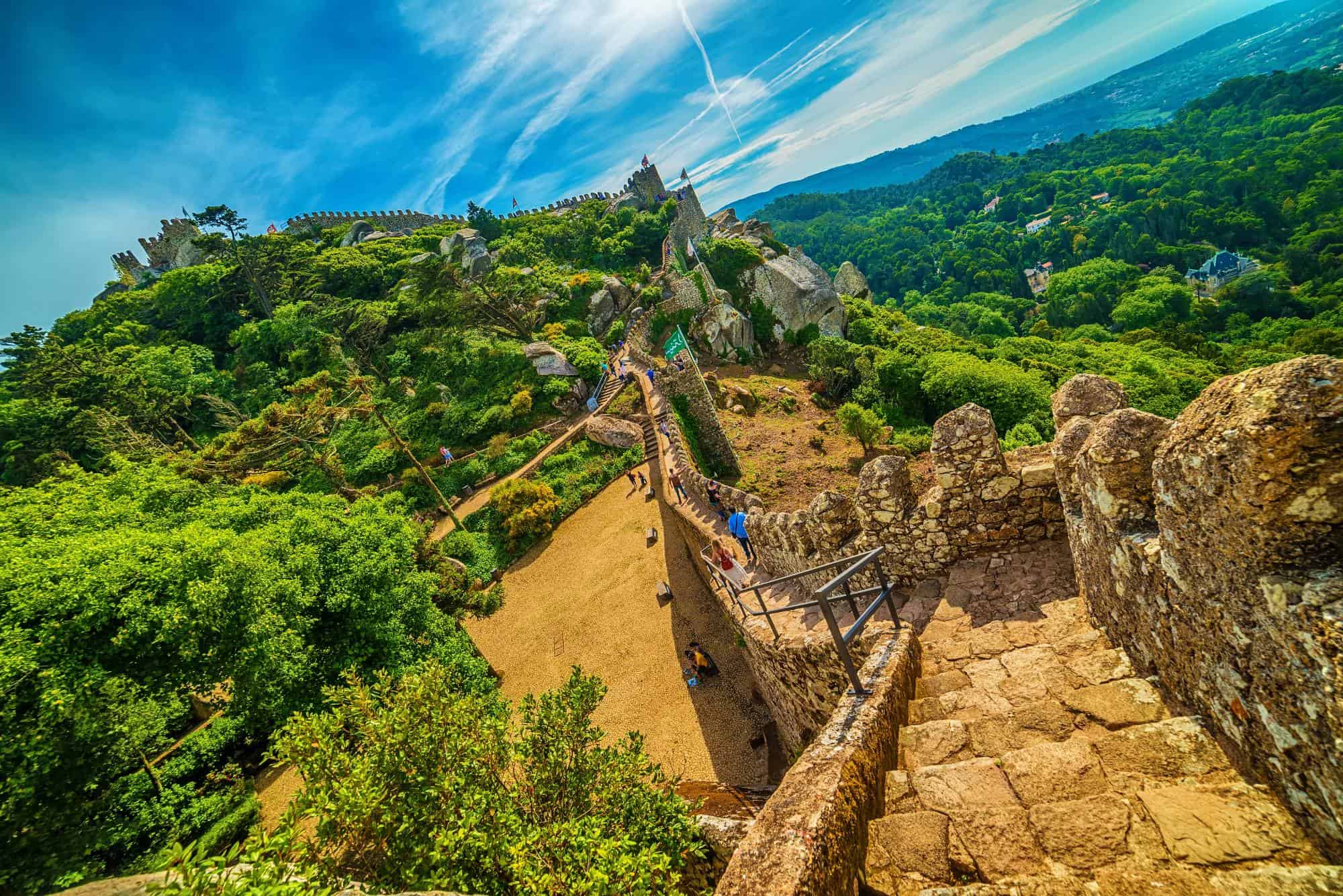
The locals have a penchant for painting their homes in bewitchingly bright colors, which together mimic the fantastically multi-hued palette of the enormous Pena National Palace that stands proudly in the hills above.
Beyond a charming central aesthetic, living in Sintra offers an extraordinary diversity of architectural and historical treasures.
A Moorish castle can be seen in one direction and the aforementioned Palácio de Pena in another.
In Sintra's central square, the medieval Palace of Sintra—yes, that's right, another palace—serves as a museum to explore.
Meanwhile, a short bus or Uber ride will carry those on the hunt for an interesting afternoon to the mystical Quinta da Regaleira—complete with its inverted well, grottoes, and tunnels—or to yet two more palaces, the Monserrate Palace and the Palace of Queluz.
History-loving expats in Sintra are sure to feel spoiled!
2. Con: life on the tourist trail
With so much to explore, it's no wonder that Sintra attracts a substantial number of tourists every year. In fact, the town is a popular day trip for many holidaying 'Lisboetas'.
The result is that for those living in Sintra, a year-round through-flow of visitors will always be a feature.
It's also worth noting that because much of the local business is geared toward tourism, restaurants, cafés, bars, and small shops in the historic center tend to be particularly overpriced for Portugal.
3. Pro: living surrounded by nature
The area around Sintra offers some of the most spectacular scenery in all of Portugal. Living in Sintra means you have access to meandering ancient woodland and can enjoy hours of scenic hiking between the many local monuments.
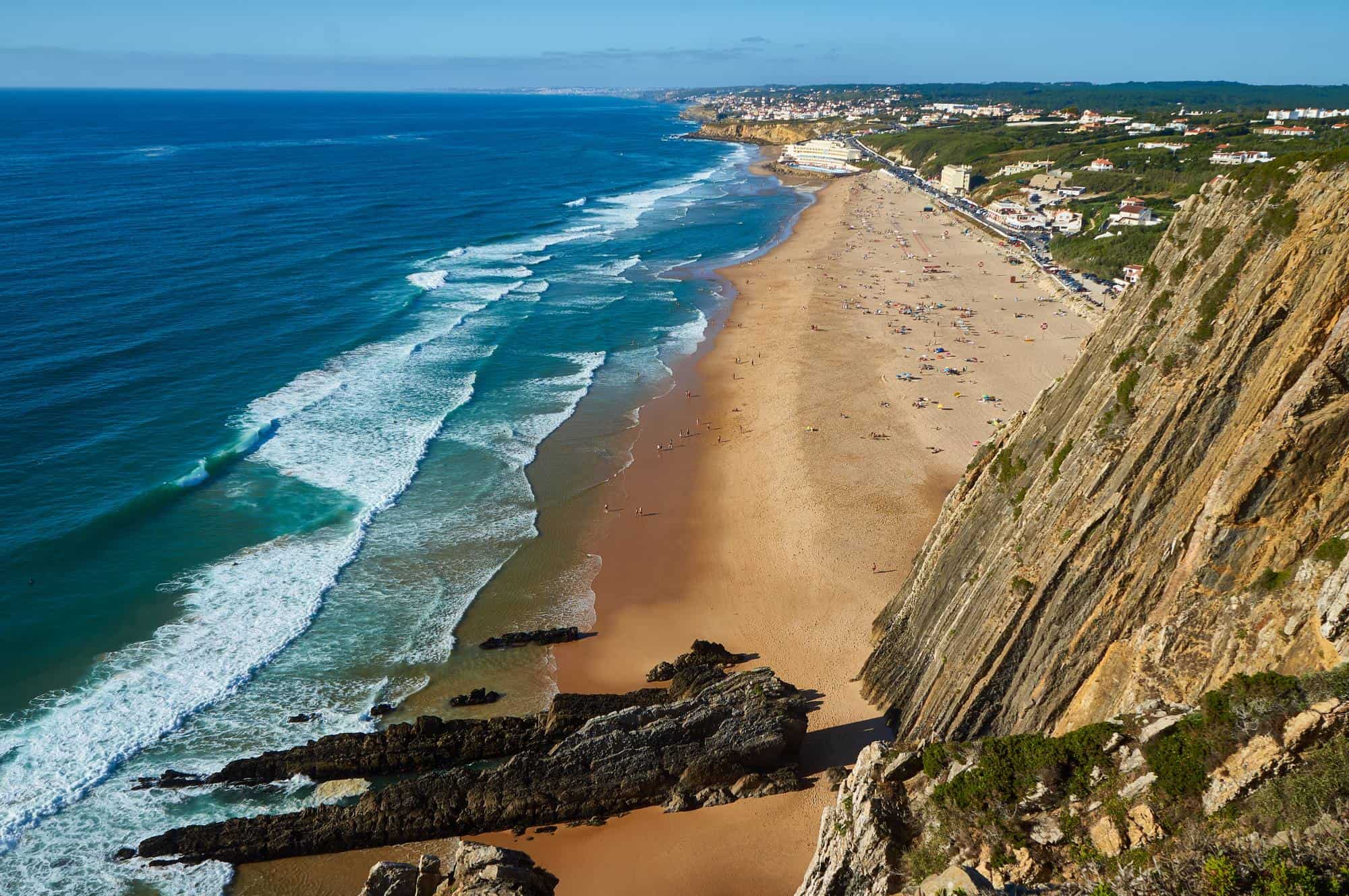
One of the reasons why the surrounding landscape remains so unspoiled is that Sintra sits on the edge of a vast national park—the Park Natural de Sintra-Cascais.
If you love nothing more than exploring nature trails and immersion in mature forestland, then Sintra should certainly be on your shortlist.
4. Con: Sintra's expensive real estate
Unsurprisingly, tourists aren't the only ones who are savvy about the beauty that Sintra offers—the Portuguese love this location just as much.
As such, Sintra includes some of the most expensive neighborhoods in the entire country! When gearing up to begin your property search in Sintra, it's best to anticipate prices that reflect some of the more exclusive areas of Lisbon rather than Portugal's equally sized towns.
If you are looking for affordable property available within Sintra, trust us, you will have some very keen competition, so it's wise not to snooze if you spot a place you like.
Those with a keen eye might find a one or two-bed apartment for rent for under €1000 per month and a similar property for sale for around €200,000.
A family-sized home might be available for rent for less than €2000 per month and to buy - for €500,000.
Of course, with many of Portugal's most affluent residents gravitating towards the town, Sintra's property market is always adorned with an array of luxury villas, achieving asking prices in the millions. Check out Idealista to see what is currently up for grabs!
Looking for a home in Portugal? You can find some useful tips in our guides regarding Renting A Property In Portugal and How To Buy A Property In Portugal.
5. Pro: living in Sintra means being close to the big city
If you'd rather not live slap-bang in the middle of a big city but you love being able to indulge in all of the nightlife, entertainment, and international cuisine that a capital city provides, then Sintra is an ideal middle ground.
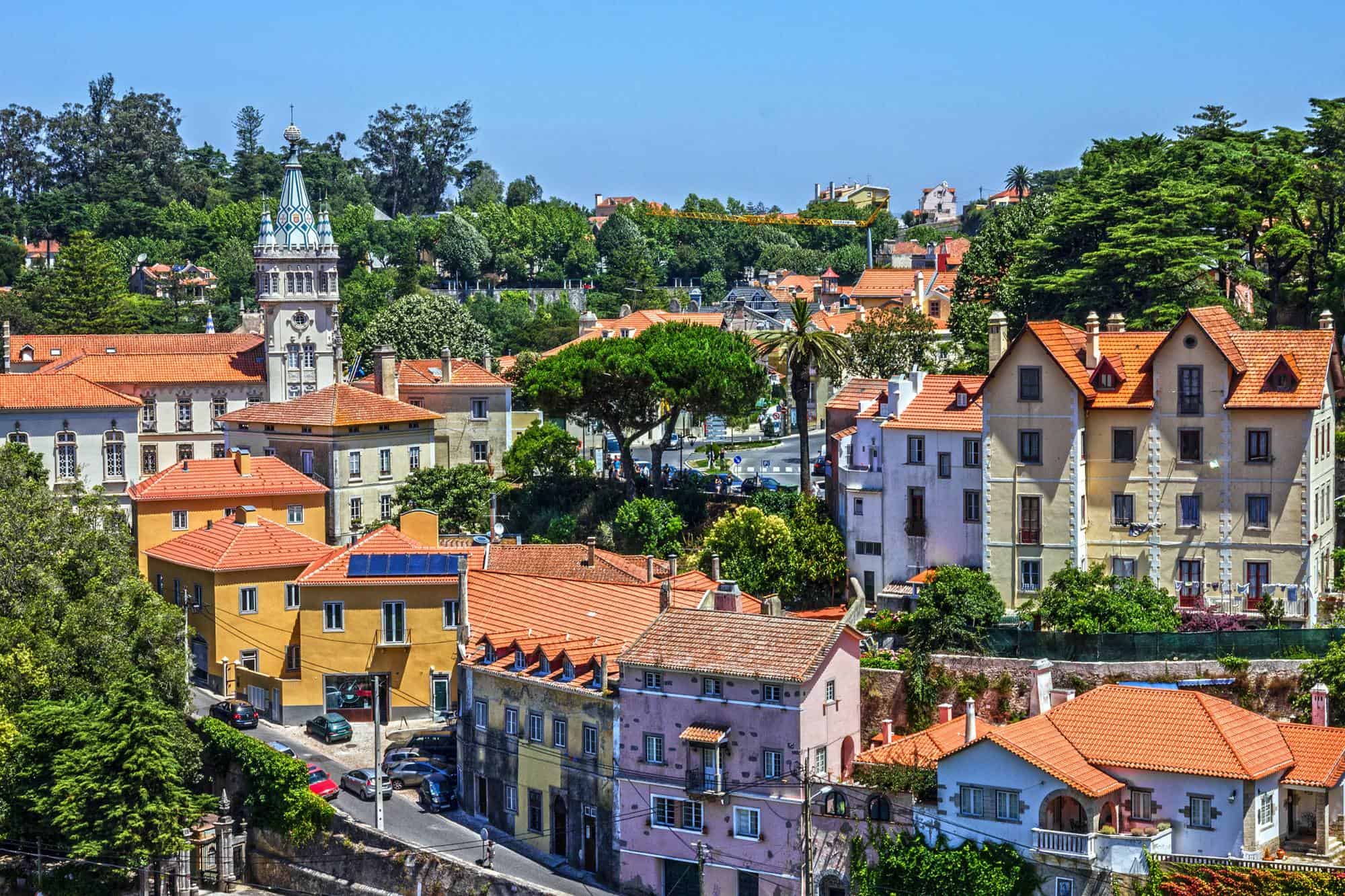
Lisbon is just 33 km away, and it takes you just over half an hour to drive there.
You can also hop on a train. If you choose the Sintra - Rossio Station route, you will arrive at the historic center of Lisbon, where all popular tourist areas and attractions are.
Sintra - Oriente Station is perfect for traveling to the airport or other destinations across the country. Both roots take under 50 minutes.
A single ride will cost you just €2.25 (plus an additional €0.50 for the reusable Viva Viagem travel card).
Or you can get a monthly travel pass. An unlimited 30-day pass for the train will cost you only €49.10.
Lisbon attracts the very best in terms of international exhibits and performers, so you can nip off for a quick urban fix whenever you feel so inclined.
6. Con: some lackluster residential areas
While the core of Sintra is always postcard-ready, it's worth noting that the town can be divided into two—with age providing the contrast.
The older area of Sintra, on the west side of town, is spectacular but a little tourist-laden, while the modern side of the town offers contemporary amenities but not much in the way of character or charm.
Properties on the eastern side of Sintra are often a little lower in price but won't offer such a romantic window view. A fantastic advantage of Sintra's more up-to-date areas, however, is that they offer far more affordable grocery shopping and dining options than those dotting the town's ancient streets.
Beyond the eastern edges of Sintra begins some of Lisbon's suburban sprawl, stretching all the way into the city.
These cheaper and sometimes rundown residential areas serve many professionals who commute into the city center for work—and some who also enjoy heading westwards, into Sintra and beyond towards the beach fronts.
7. Pro: unspoiled beaches galore
Because of its almost-coastal location, Sintra is a perfect stepping-stone between the buzz of the city and the peace of the shoreline.

Having crossed the national park area that spans between Sintra and the Atlantic Ocean, explorers will discover spectacular beaches such as Praia Grande, Praia das Maçãs, and Praia da Adraga.
If you are an avid bather, please note that this stretch of the Portuguese coastline is prized for its challenging surf but is not always safe for swimmers. As such, it is prudent to adhere to safety warnings and only take a dip when lifeguards are present!
8. Con: not the largest expat community
Portugal as a whole is a very attractive destination for all manner of expats, with particularly large foreign communities to be found in the bigger cities and in the retirement-friendly Algarve.
When picturing living in Sintra—whether as a retiree, as a member of a nomadic family, or as a telecommuting professional—the question of whether you'd rather dive into a new culture or find an expat circle of friends is a very personal one.
If you are looking for a magical location that goes above and beyond the norm, it may be valuable to know that Sintra's expat population is somewhat on the smaller side but growing!
Here you won't find as diverse a foreign community as you would living in Lisbon or even moving to nearby Cascais, but there is still a selection of active expat groups to find on social media.
Anyone who likes the idea of balancing learning a new language with meeting other foreigners is likely to discover a pleasing middle ground.
9. Pro: Sintra is well-connected to the wider world
Some of Europe's most beautiful locations require jumping through all sorts of hoops to get to. Getting lost on mountain roads, realizing that the bus timetable is actually the old lady in the village - if you're a traveler, then you've probably experienced scenarios like these!
Happily, in Sintra, there is no need to worry about barriers to being able to visit family back home, welcoming friends as guests, or treating yourself to a weekend getaway.
That's because Sintra is connected to the city of Lisbon by a swift and direct train line, and connections to the city's substantial international airport are readily available.
From Lisbon, trains and buses also run all over the country, and even on into Spain. Expats in Sintra can be confident of their connection to the wider world!
10. Con: a mild but misty climate
While Portugal is renowned for its long and dry summers, Sintra is safeguarded from this annual scorching by relatively high altitude, Atlantic breezes, and a lushly vegetated landscape.
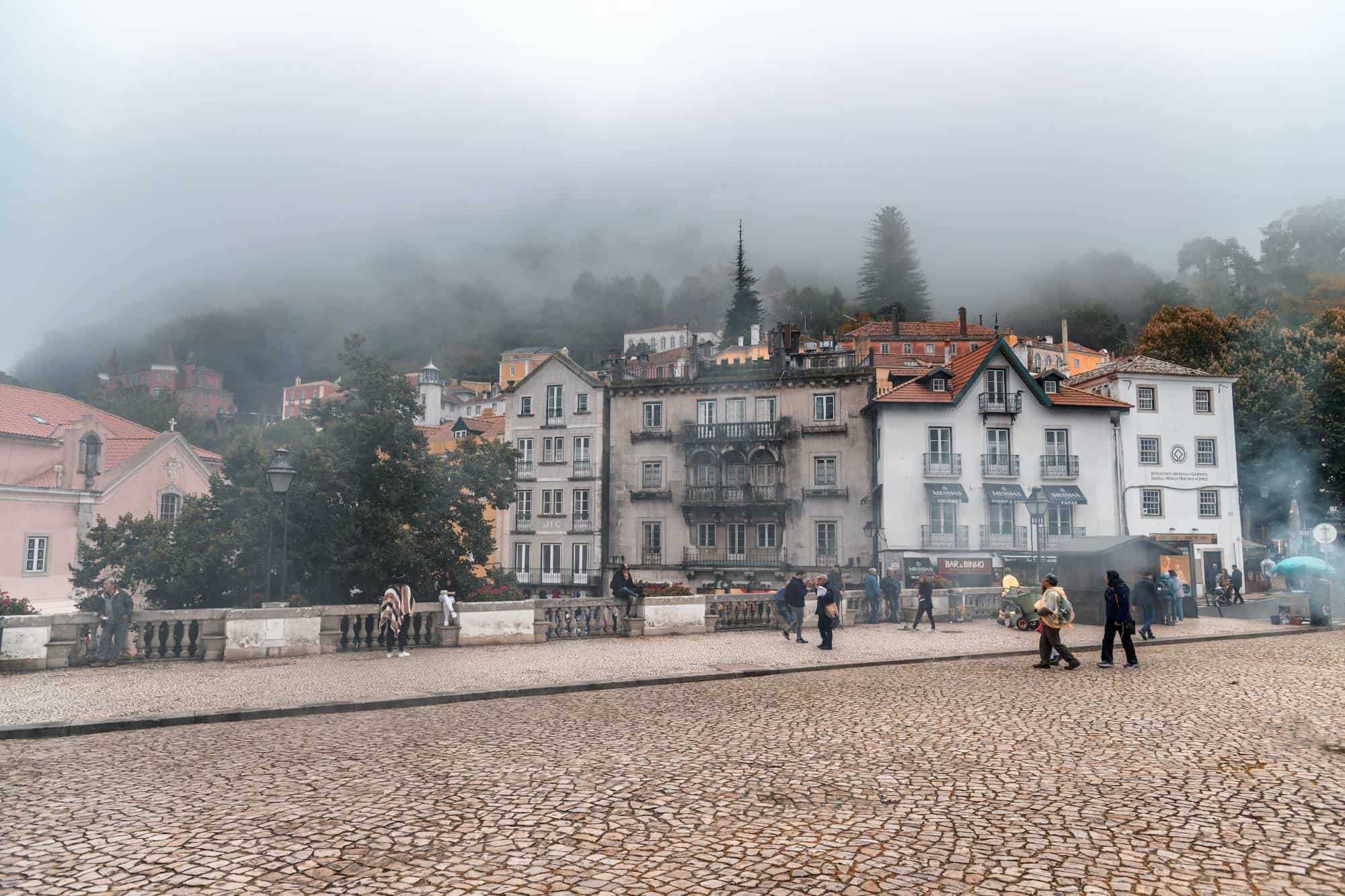
In fact, living in Sintra, you will find yourself within a rather unique microclimate! In contrast to the extreme heat waves and winter frosts that are the norm further inland, the weather in Sintra rarely dips far below 10°C (50°F) or pushes far above 30°C (86°F).
Such mild weather all year round can be very beneficial to your health. However, there's a slight downside to it.
While this narrow temperature window might be very appealing to some, it's also worth noting that the town is often bathed in mist.
Over much of the year, misty mornings are characteristic. They do tend to burn off by the afternoon, but expats in Sintra may find it frustrating to know that nearby Lisbon is a sun trap while visibility remains poor at home!
11. Pro: low crime rates make living in Sintra safe
Just about everyone would rather know that the place they call home is a safe space. Any expat casting their gaze on this part of the Iberian peninsular is sure to be satisfied as, according to the Global Peace Index, Portugal is one of the safest countries in the world.
Zooming into Sintra itself, this reputation for safety still applies, with very low crime rates enjoyed by the locals.
The only hazards that one should stay wise to in Sintra are petty thefts in tourist areas and theft from cars. When out and about, keep an eye on your purse, wallet, and smartphone to avoid a run-in with sticky fingers.
If leaving your car unattended, put valuables out of sight, and don't forget to lock the doors.
12. Con that can be a pro for some: Sintra is not a party town
If you are after dazzling nightlife, Sintra is not the right place for you; you'd be better off in Lisbon.
There are no nightclubs in Sintra, and this is exactly why at night, the town is full of romantic charm and intimacy. It's the best time for couples to wander around the old streets, visiting bars and bodegas (wine cellars) to sample Portuguese wines.
Try, for example, Adega das Caves in Praça da República. It's a great place right in the center of town, very popular with expats and locals.
13. Pro: Sintra is quite walkable
Sintra is a walkable city. You do need to be quite fit to brave the footpath leading from the historic center to the Pena Palace and Moors castle as it's very steep. However, you don't do sightseeing every day, do you?
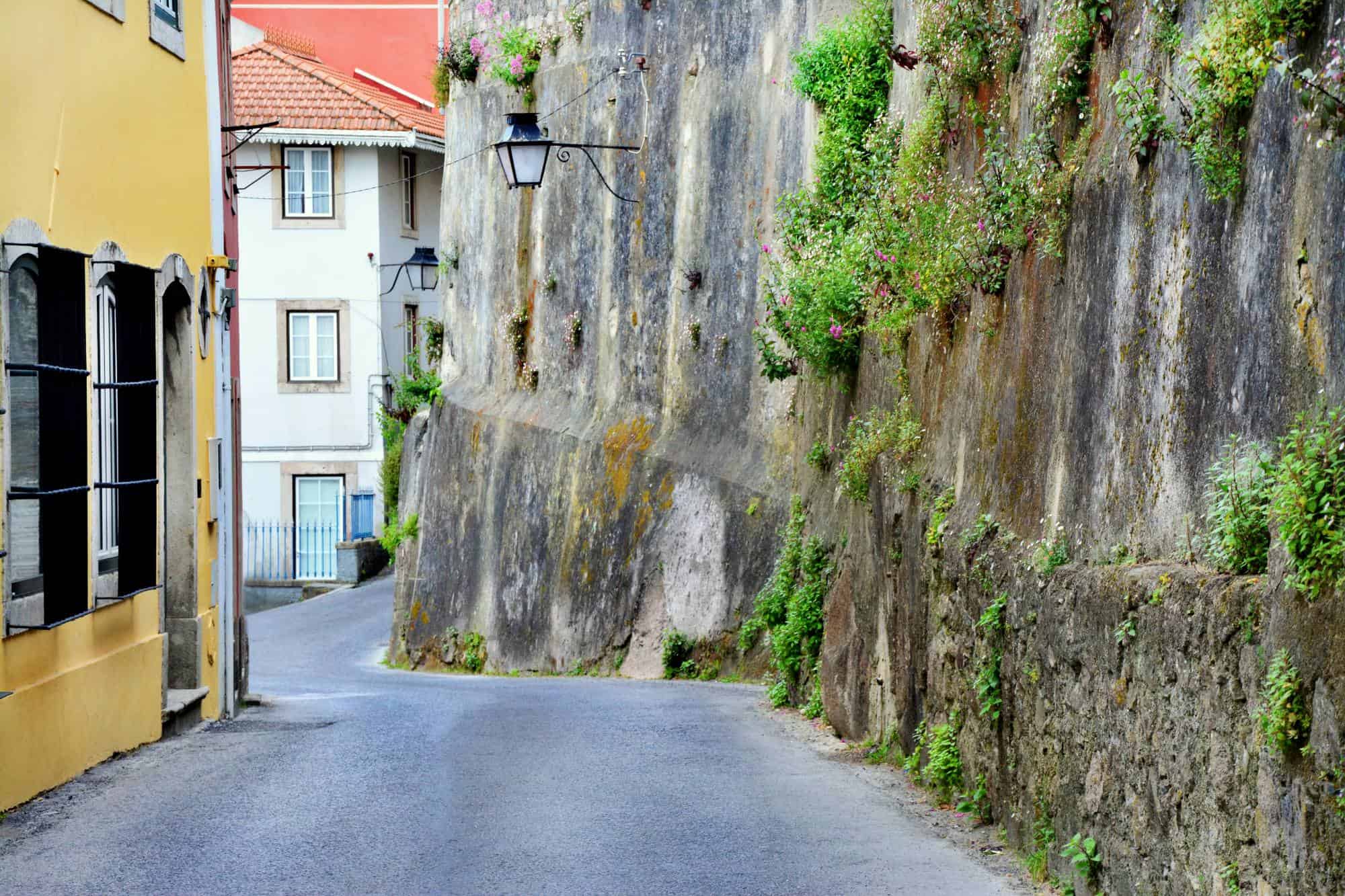
For your day-to-day needs like shopping, chores or a meal out with friends, walking is the best way to get around. And when you want to showcase the palace to visiting friends and family, use the popular Bus 434. It will take you right up the hill.
Another great way to explore Sintra is to rent a bike. You can bike around the beautiful hills and forests of the natural park and even travel all the way to the seaside. It's not that far; for example, the small seaside town of Azenhas do Mar is less than 10 km away.
You will also find bike rentals in Sintra quite affordable. You can find out more at Park E Bike.
14. Con: public transport is a bit problematic
If you are in a rush or in no mood for walking, you can use public buses to get around the town. However, you might find them overcrowded and thus not very appealing.
There's also a fabulous retro tram, the Electrico de Sintra tram, that runs from Sintra all the way to Praia das Maçãs. It's a lovely but slow ride, more for entertainment and tourists than for the residents to use as means of transportation.
There are also taxis and tuk-tuk drivers, but they mostly aim at tourists and can become quite expensive if used daily.
15. Pro: Sintra has good healthcare facilities
As a legal Portuguese resident, you can use public healthcare facilities in Sintra. The Hospital Professor Doutor Fernando Fonseca, EPE serves as the public hospital for Sintra and Amadora. As it's the case with any national hospital, you might find there is quite a long waiting time to get an appointment. Also, the staff is mostly Portuguese speaking.
If you need fast service and access to English-speaking doctors and nurses, private healthcare is your only option. Luckily, there's a brilliant private hospital in Sintra - CUF Sintra Hospital. The hospital offers various medical and surgical specialty consultations, diagnostic tests, inpatient and nursing care, and more.
The hospital also has Permanent Care, Adult, and Pediatric service.
If, like many expats, you opt for international health insurance, make sure you get the best value for money by comparing international health insurance options from various providers to find the best deal.
16. Con: driving in Sintra is not advised!
Just don't do it. While it's ok in the outskirts, driving in the center is a nightmare.
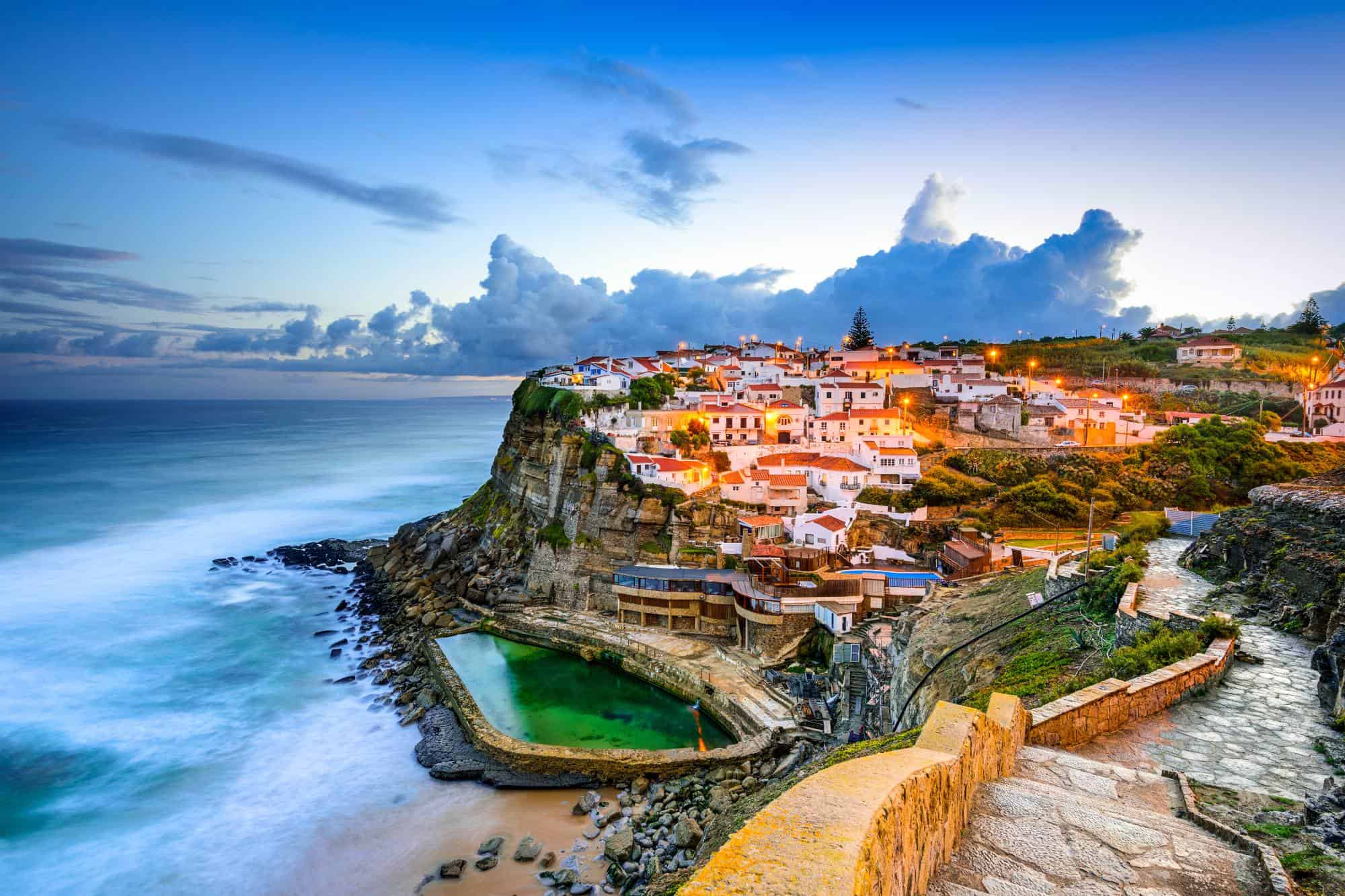
The narrow, winding one-way streets cannot cope with modern traffic. Parking options are very limited and, in some areas, just do not exist. In summer, when tourists arrive by car, the town is a complete traffic jam.
17. Good choice of schools and education facilities
Living in Sintra with children is easy - you will find all the educational facilities you need on your doorstep.
There are plenty of state-funded schools in Sintra. However, if you want your children to be educated in English, you will find there are several options for you as well, with Prime International School and TASIS Portugal International School being the main ones.
Prime International School follows Cambridge International Education (CIE), while TASIS School is based on US education standards.
Living in Sintra - summary
Through a Portuguese lens, Sintra is a hugely desirable but expensive location that many dream of moving to. For expats, this enigmatic, culturally rich, and scenic town may well be considered quite affordable!
Sintra doesn't offer the same opportunity for basking in the sunshine that other nearby locations do, but it makes up for this in abundance, with unparalleled natural beauty to be seen in every direction.
Tourists are a feature of life in Sintra, although the advantage of having the big city so close may be considered a counter-balance. If fairytale-like charm and a relaxed approach to living are your goals, then Sintra could be your ultimate expat paradise!
Other popular locations in Portugal to consider:
- Living In Aveiro: Why Expats Love It
- What It’s Like Living In Setúbal, Portugal, As An Expat
- 15 Things To Know About Living In Viseu, Portugal Before You Move
- Is Living In Coimbra As An Expat Right For You?
- Living In Porto For Expats: The Pros & Cons You Must Know
- Living In Madeira: Facts For Expats
- What It’s Like Living In The Azores As An Expat
You might find useful:
- Living in Portugal – The Expats’ Guide: practical information and tips on moving to Portugal from the pros and cons, to visas and residency, to the cost of living and more;
- Best Places To Live In Portugal
- Didn’t find what you were looking for or need further advice? Comment with your question below, and we will do our best to help.
Secure Peace of Mind with Best-Value International Health Coverage
International Citizens Insurance provide free, no-obligation quotes from the leading international health insurance providers with plans tailored to meet your needs. Trusted by thousands of expats worldwide.




